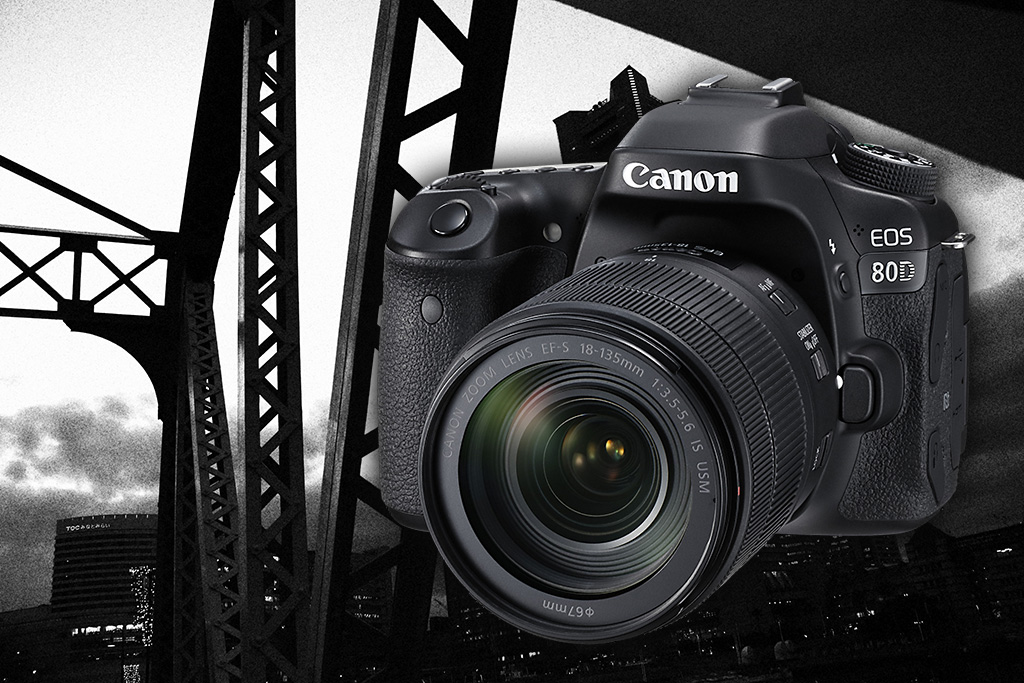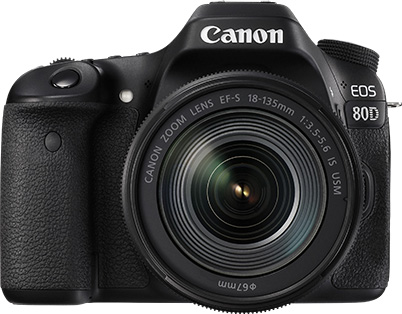The EOS 80D is equipped with a variety of new shooting features, such as a new white balance setting and new Creative filters for movie shooting. In this part, we ask the developers about the new functions. (Reported by: Ryosuke Takahashi Group photo by: Takehiro Kato Photos by: Tomoko Suzuki)


(Back row from left) Kohei Furuya (ICP R&D Center 2)/ Koji Ikeda (ICP Development Center 2)/ Terutake Kadohara (ICP R&D Center 2)/ Takashi Ichinomiya (ICP R&D Center 2)/ Yuichiro Sugimoto (ICP Division 1)
(Front row from left) Takashi Kishi (ICP Development Center 2)/ Masahiro Kobayashi (ICP Division 2)/ Nobuyuki Inoue (ICP Development Center 2)/ Koji Sato (ICP Development Center 1)/ Yutaka Watanabe (ICP Development Center 1)
Q: How many lenses’ aberration correction data are registered in the camera?
A:
“Aberration correction data of about 30 lenses are stored in the camera by default, but by making use of EOS Utility, you can register data for up to about 40 lenses”.
The edges of the image may be cropped slightly when distortions are corrected, so it is advisable not to fill your composition up to the edges. You can make use of EOS Utility to check whether the correction data for a specific lens is available.
Q: Which lenses have lens aberration correction options enabled during shooting?

A:
“The lens aberration correction options are enabled for on lenses with incorporated lens aberration correction data. For lenses with no built-in data, you can register them from EOS Utility so that they can be applied during shooting”.
In addition to peripheral illumination and chromatic aberration, the lens aberration correction feature is also capable of correcting distortion.

Distortion Correction: Disable (Left: Disable / Right: Enable)
Q: What types of scene is ‘AWB (White priority)’ effective for?

A:
“’AWB (White priority)’ is a feature that reduces the warm colour tones in an image such as when you are shooting under tungsten lighting. With the introduction of this new option, the conventional AWB has been renamed ‘AWB (Ambience priority)’, which places emphasis on conveying the ambience of the location by retaining some of the warm colour tones”.
To sum up, the ‘AWB (White priority)’ setting comes in handy when you want to reproduce white colour faithfully.

AWB (Left: Ambience Priority / Right: White Priority)
Q: What does the Silent shooting feature do?

A:
“The Silent shooting feature reduces the operating sound during viewfinder shooting”.
Specifically, this feature ensures that the camera operates quietly by reducing the speed of shutter cocking and mirror drive, and is best suited for shooting wedding ceremonies, concerts and sleeping babies. During silent continuous shooting, the frame rate is able to reach a maximum of about 3 fps.
Q: What does ‘Initial AF point AI Servo AF’ do?

A:
“The Initial AF point AI Servo AF feature enables tracking of smaller subjects when it is combined with the Colour tone detection AF in the 45-point automatic selection AF mode”.
The initial point for AI Servo AF can be selected either automatically or manually. This feature is useful for photographing portraits or trains.
Q: What is Picture Style (Fine Detail)?

A:
“In the Fine Detail setting, the ‘Fineness’ and ‘Threshold’ of Sharpness are both set to the minimum value of 1, thus easing the expression of fine edges and detailed textures. Also, it places emphasis on the gradation, and thus the contrast is set to a level that is lower than in the Standard setting”.
Capable of depicting fine lines in detail, this feature can be used to produce realistic shots of objects such as trees and rocks.
Q: How does the AF point auto switching feature work?

A:
This feature is usable during AI Servo AF shooting. The developers say that
“When 45-point automatic selection AF, Large Zone AF or Zone AF is selected, you can choose how you want the AF area to respond according to the movement of the subject. For example, the sensitivity of the AF area can be increased to a level that is higher than the usual setting”.
Increasing the sensitivity of the AF area enables the AF point to respond more quickly, thus allowing subjects with vigorous movements to be captured more easily.
Q: How many types of Creative filters are available?
A:
The developers tell us that “Creative filter is a feature for adding filter effects to an image”, and that there are seven filter effects in total, namely Art bold effect, Water painting effect, Grainy B/W, Soft focus, Toy camera effect, Fish-eye effect and Miniature effect. The effects can be shown in real time during Live View shooting, thus making it easier to produce the intended image.

Grainy B/W Creative Filter
Q: What Creative filters are available during movie shooting?
A:
“The Memory filter evokes a feeling that is reminiscent of a distant memory, while Dream adds a fantastical and soft touch to the image. Old Movies creates an ambience that is similar to an old movie, and Dramatic B&W produces images with a strong contrast. Miniature Effect Movie allows you to capture moving objects that appear like miniature models”.
The Creative filters for movies produce effects that are different from those for still images.
Q: What effects can be created using the HDR shooting modes?
A:
“In addition to Natural, which widens the dynamic range, the EOS 80D is also equipped with many other modes with unique effects. For example, Art Standard reduces the contrast of an image to create an effect that is similar to that of a painting, while Art Vivid produces a graphic art effect with more vivid colour tones”.
Other modes include Art Bold and Art Embossed.

HDR Art Bold Effect
Photo: Tomoko Suzuki
Q: What scenes are HDR Movie most suited for?
A:
The developers tell us that “HDR Movie is effective for backlit and other scenes”. It can be used in the same way as that for still shots, and is effective in preventing blowout of the background. It is therefore suited for scenes with drastic difference in brightness, such as when photographing a portrait subject in a backlit condition or when capturing an outdoor view from indoors. The HDR movie feature combines two images with different exposures into a single frame.
*This article is created based on a trial model. Aspects such as the appearance and image quality may differ slightly from the actual product.

EOS 80D Kit II (EF-S18-135mm IS USM)
For details on the EOS 80D Kit II, click here.

Ryosuke Takahashi
Born in Aichi in 1960, Takahashi started his freelance career in 1987 after working with an advertising photo studio and a publishing house. Photographing for major magazines, he has travelled to many parts of the world from his bases in Japan and China. Takahashi is a member of the Japan Professional Photographers Society (JPS).

Digital Camera Magazine
A monthly magazine that believes that enjoyment of photography will increase the more one learns about camera functions. It delivers news on the latest cameras and features and regularly introduces various photography techniques.
Published by Impress Corporation
































